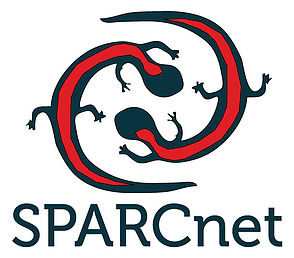Salamander Mark-Recapture using SPARCnet plots with the Schnabel Method
Author(s): Kristine Grayson1, Raisa Hernández Pacheco1
University of Richmond
1961 total view(s), 1766 download(s)
Blank Field Data Sheet_Schnabel lab.xlsx(XLSX | 16 KB)
Salamander Capture History Matrix example.xlsx(XLSX | 26 KB)
Salamander Data.xlsx(XLSX | 44 KB)
Salamander plot arrangement.png(PNG | 36 KB)
SPARCnet salamander lab_ver 2.pdf(PDF | 131 KB)
- License terms
Description
This is a salamander capture-mark-recapture lab module where students visit the field and collect a third survey occasion to estimate population size. This module is designed for locations where students can visit SPARCnet salamander mark-recapture sites. Students are provided with capture history data for two sampling occasions. In the field, students carry out the third capture sample occasion (scoring the individual mark or recording the individual as new). For the analysis portion, students learn the difference between the Peterson method and the Schnabel method for estimating population size from mark-recapture data. This lab takes two periods, one for field data collection and one for data analysis. Capture history data for the three occasions and a diagram of the plot arrangement is provided for groups with no access to the field.
Notes
Version 2.0 with salamander data sheet included for groups with no access to the field.
Cite this work
Researchers should cite this work as follows:
- Kristine Grayson, Raisa Hernández Pacheco (2018). Salamander Mark-Recapture using SPARCnet plots with the Schnabel Method. SPARCnet: Educational Resources, (Version 2.0). QUBES Educational Resources. doi:10.25334/Q4XM8Z
